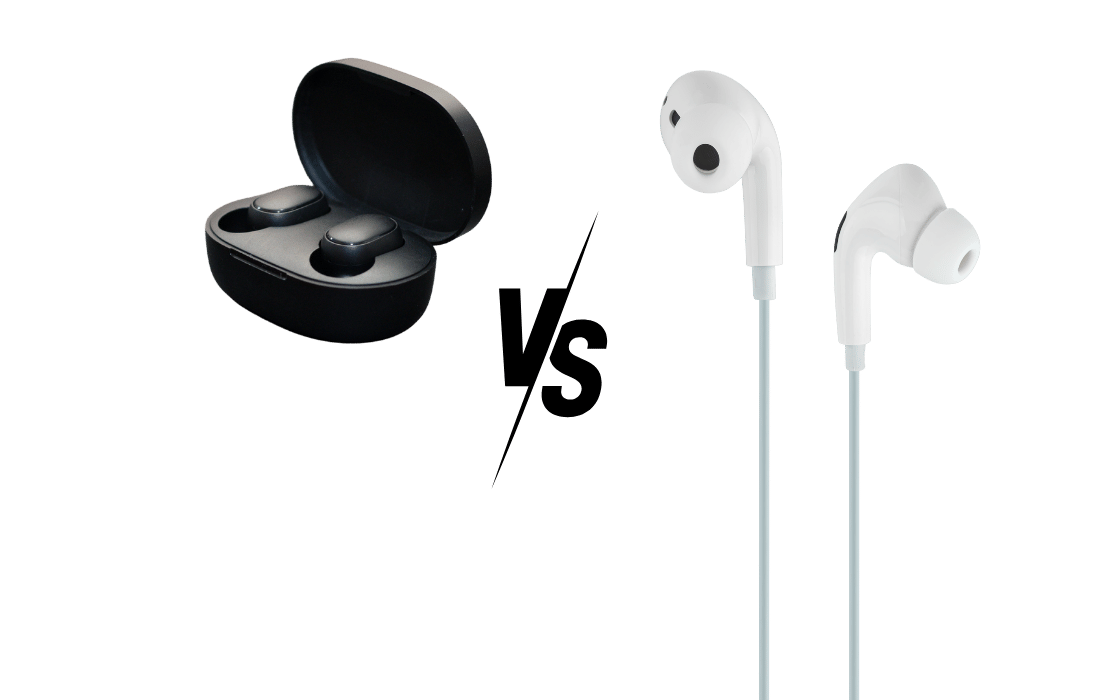In the fast-paced world of athletics, technology has become an integral part of training, recovery, and even competition. From recovery tools and biohacking gadgets to the omnipresent use of wireless headphones, athletes are more “connected” than ever.
However, it’s essential to understand the potential risks associated with electromagnetic field (EMF) exposure from these wireless technologies. Let’s dive into the EMF emissions face-off and explore how athletes can protect themselves while maximizing the benefits of technology.
Understanding the Impact of EMF on Athletic Performance
In the relentless pursuit of peak performance, athletes dedicate countless hours to training, nutrition, and recovery. Yet, amidst this focus, a critical factor often goes unnoticed: electromagnetic fields (EMF). EMF is omnipresent in our modern technological landscape, emanating from sources like cell phones, Wi-Fi networks, and power lines. While some EMF exposure can be detrimental, it’s important to note that not all EMF is harmful. For instance, Pulsed Electromagnetic Field (PEMF) therapy uses beneficial EMF to promote healing and recovery by mimicking the Earth’s natural frequency.
EMF is a form of energy that surrounds us in various forms, ranging from natural sources like the Earth’s magnetic field to human-made sources such as power lines and electronic devices. EMF is categorized into two main types: ionizing and non-ionizing radiation. Ionizing radiation includes X-rays and gamma rays, which carry sufficient energy to ionize atoms and molecules, posing severe health risks. Non-ionizing radiation includes lower-energy forms such as radio waves and microwaves, which are considered less harmful in isolation but may have subtle effects over time.
Athletes encounter EMF from multiple sources in their environments, including smartphones, wearable fitness trackers, Wi-Fi networks, and stadium lighting systems. The human body, composed of trillions of cells with charged ions and intricate biochemical processes, may experience disturbances when exposed to EMF. These disturbances can lead to potential physiological effects, such as generating reactive oxygen species (ROS) and oxidative stress, which can damage cellular structures and impair biological functions.
intricate biochemical processes, may experience disturbances when exposed to EMF. These disturbances can lead to potential physiological effects, such as generating reactive oxygen species (ROS) and oxidative stress, which can damage cellular structures and impair biological functions.
Wired vs. Wireless: The EMF Emissions Face-off
Wireless devices are the epitome of modern convenience. No tangled cords, no fuss. However, this convenience comes at a cost. Wireless devices emit radiofrequency (RF) radiation, a type of non-ionizing EMF. Research has shown that prolonged exposure to RF radiation can have biological effects, potentially impacting our health in the long run.
Take AirPods, for instance. As Gary Brecka mentions in his eye-opening video, each AirPod not only communicates with your device but also with each other. This constant communication involves emitting RF radiation right next to your brain and penetrating the blood-brain barrier.
Athletes often use wireless devices like smartwatches, heart rate monitors, and Bluetooth-enabled recovery tools. While these gadgets provide valuable data and enhance training, they also expose athletes to EMF radiation. Devices like PEMF (Pulsed Electromagnetic Field) therapy mats, often used for recovery, also contribute to EMF exposure. While beneficial for recovery, using these tools wisely is crucial to avoid excessive EMF exposure.
Wired Technology: The Safe Haven
On the other hand, wired devices emit significantly less EMF. When you use wired headphones, the electrical signal is carried through the wire, reducing the amount of RF radiation exposure to virtually zero. Yes, wires can be a hassle, especially during workouts, but considering the potential health benefits, it might be worth the minor inconvenience.
The Health Implications of EMF Exposure for Athletes
1. Cognitive and Neurological Effects
Several studies have raised concerns about the potential cognitive and neurological effects of prolonged RF radiation exposure. For instance, a study published in the International Journal of Environmental Research and Public Health found that exposure to EMF from mobile phones could potentially affect cognitive functions, including memory and learning. For athletes, cognitive function is critical for performance, decision-making, and reaction times.
2. Cancer Risk
The World Health Organization (WHO) has classified RF radiation as a possible carcinogen, citing studies that suggest a potential link between RF exposure and brain tumors. One significant study found that prolonged mobile phone use could increase the risk of gliomas, a type of brain tumor. This is particularly concerning for athletes who rely on their mental acuity and neurological health for optimal performance.
3. Sleep and Recovery
Sleep is paramount for athletes, as it significantly impacts recovery and performance. EMF exposure, especially from devices used before bed, can interfere with sleep quality. The blue light from screens and the radiation from wireless devices can disrupt circadian rhythms, making it harder to fall asleep and achieve deep, restorative sleep. A good night’s sleep is essential for muscle recovery, mental clarity, and overall performance.
4. Immune System and General Health
EMF exposure has been shown to affect the immune system. Dr. S. Jayasree highlights in Science India how mobile phone radiation can penetrate up to an inch and a half into your brain, interfering with the human biofield and potentially leading to a variety of health issues. These include headaches, extreme fatigue, joint pain, muscle spasms, tremors, eye damage, and reduced efficiency of white blood cells.
5. The Case of Wireless Charging
In today’s fast-paced world, wireless charging has emerged as a staple of our technology-driven lives. The ease of recharging devices by simply placing them on a pad is a modern luxury. However, as with many advancements in technology, there are potential health implications that accompany this convenience. One such concern is the exposure to EMF radiation.
Wireless charging operates on the principle of electromagnetic induction. A charging station or transmitter creates a magnetic field, which the receiver in the device intercepts, transforming it back into electrical energy. According to a study published in Radiation Protection Dosimetry, the resulting spatially and temporally averaged exposure for persons in the RF fields of the considered applications is below 0.1% of the reference level for power density according to the International Commission on Non-Ionizing Radiation Protection (ICNIRP) guidelines. However, peak values can be considerably higher, especially when devices are operated in close proximity to the body.
Recommendations for Reducing Wireless Device Usage
Now that we’ve unpacked the potential risks, let’s talk about practical steps to reduce your wireless device usage:
1. Go Wired Whenever Possible
Invest in quality wired headphones. They might not be as trendy as AirPods, but your brain and body will thank you.
2. Limit Wireless Device Usage Before
Bed: To enhance sleep and recovery, minimize the use of wireless devices before bed. Instead of scrolling through your phone, try reading a book or practicing relaxation techniques.
3. Use Airplane Mode
Keep your phone in airplane mode when not needed, especially during workouts, in your pocket, or while sleeping. This simple step can significantly reduce your exposure to EMF.
4. Digital Detox During Workouts
Enjoy a digital detox during your runs or workouts. Listen to the natural sounds around you, or use wired headphones if you need music.
5. Leverage EMF Protection
Consider using EMF protection products, such as those offered by Aires Tech. These devices claim to neutralize the harmful effects of EMF, allowing athletes to capitalize on technology while safeguarding their health.
Aires Tech: The Solution for Athletes

In a world increasingly dominated by wireless devices and technological advancements, the need for effective EMF protection has never been greater—especially for athletes who rely heavily on these tools. Aires Tech has emerged as a leader in the EMF protection space, offering scientifically backed solutions that go beyond conventional methods to safeguard health and enhance performance. Here’s how Aires Tech is revolutionizing the way athletes interact with technology.
Scientifically Validated Technology

What sets Aires Tech apart is its commitment to rigorous scientific research and development. Unlike many products in the EMF protection market that rely on vague claims or pseudoscience, Aires Tech bases its technology on decades of peer-reviewed research. At the heart of their innovation is the patented silicon-based microprocessor, a unique resonator that transforms harmful electromagnetic frequencies into biologically compatible waves. This ensures that devices function normally without emitting radiation that could disrupt cellular processes or cause oxidative stress.
This technology has been extensively tested using advanced methodologies such as EEG (electroencephalograms), EKG (electrocardiograms), and HRV (heart rate variability) analysis, all of which confirm its effectiveness in reducing EMF-related stress on the body. These results demonstrate Aires Tech’s ability to harmonize chaotic electromagnetic radiation, allowing athletes to reap the benefits of technology without the associated risks.
Tailored Solutions for Athletes
Athletes are often in environments where EMF exposure is unavoidable—training facilities filled with Wi-Fi routers, Bluetooth-enabled recovery tools, and smart devices are part of daily life. Aires Tech offers a variety of products designed to meet these specific needs:
Lifetune One: Ideal for everyday use, this compact device can be attached to personal electronics like smartphones and tablets to neutralize EMFs at the source.
Lifetune Go: Perfect for athletes on the move, this wearable device provides a personal bubble of EMF protection, ensuring safety during travel or intense training sessions.
Lifetune Flex: A versatile option for athletes looking to protect both themselves and those nearby, with an extended range of coverage.
Lifetune Zone: Designed for larger spaces, such as home gyms or living areas, this device offers wide-ranging EMF protection for athletes and their families.
Lifetune Zone Max: Offering the most extensive coverage, this device is ideal for large living spaces, office environments, or team facilities. With its powerful 139-foot (42-meter) effective range, the Lifetune Zone Max ensures that every corner of your space is protected from harmful EMF radiation, making it perfect for athletes with high-tech setups or shared training environments.
These products are user-friendly and seamlessly integrate into an athlete’s lifestyle, providing robust EMF protection without adding complexity.
Conclusion: Wired is the New Cool for Athletes
In the grand scheme of things, the choice between wired and wireless technology boils down to a trade-off between convenience and health. While more research is needed to fully understand the long-term effects of EMF exposure, the evidence we have so far suggests it’s wise to err on the side of caution.
So, the next time you’re tempted to pop in those AirPods, remember Gary Brecka’s words and think twice. Dust off your wired headphones, embrace the occasional annoyance of tangled cords and enjoy the peace of mind that comes with reduced EMF exposure. After all, staying wired might just be the smartest move for your health and performance.
And hey, if all else fails, there’s always the option of enjoying your workout to the natural soundtrack of life—no tech required.







